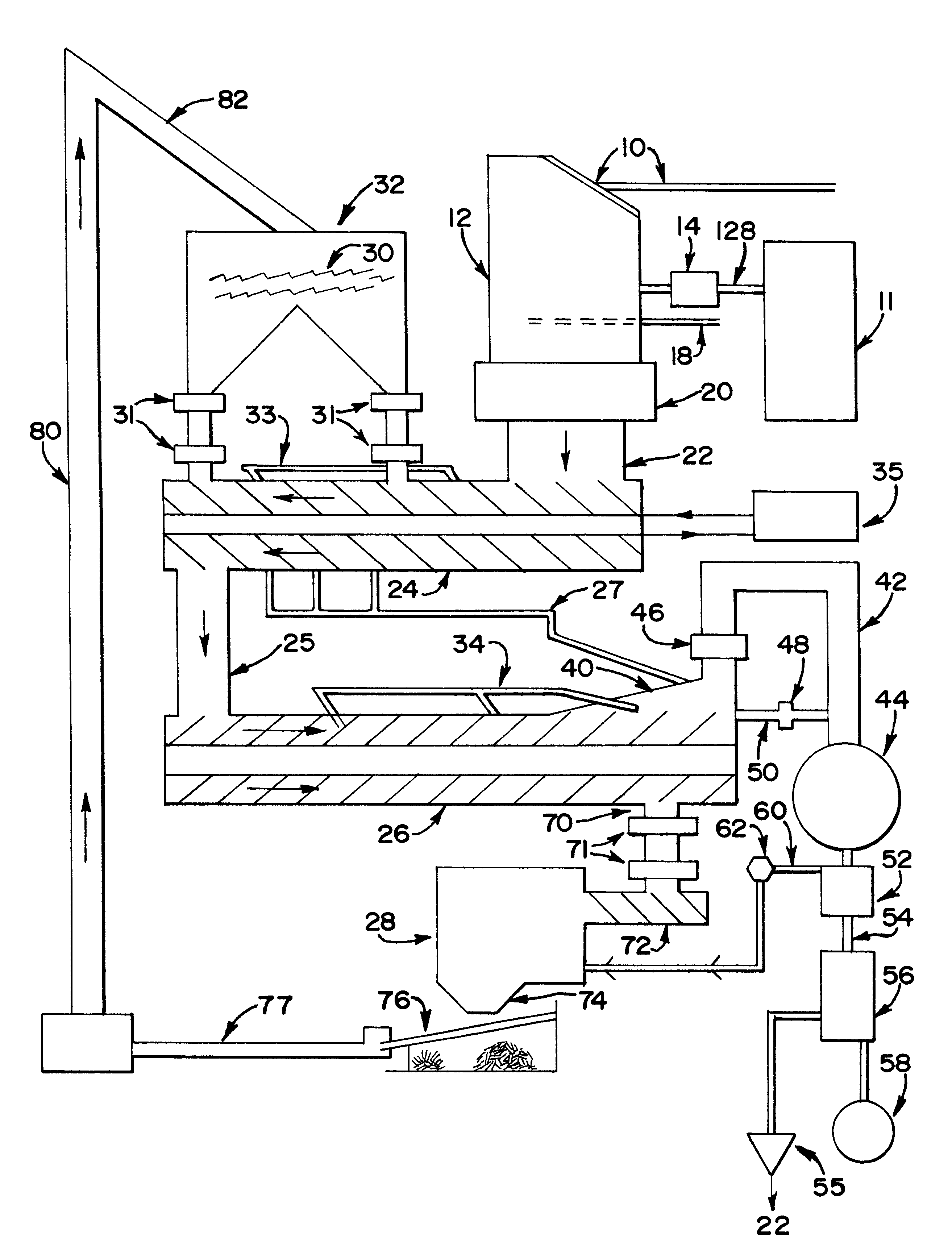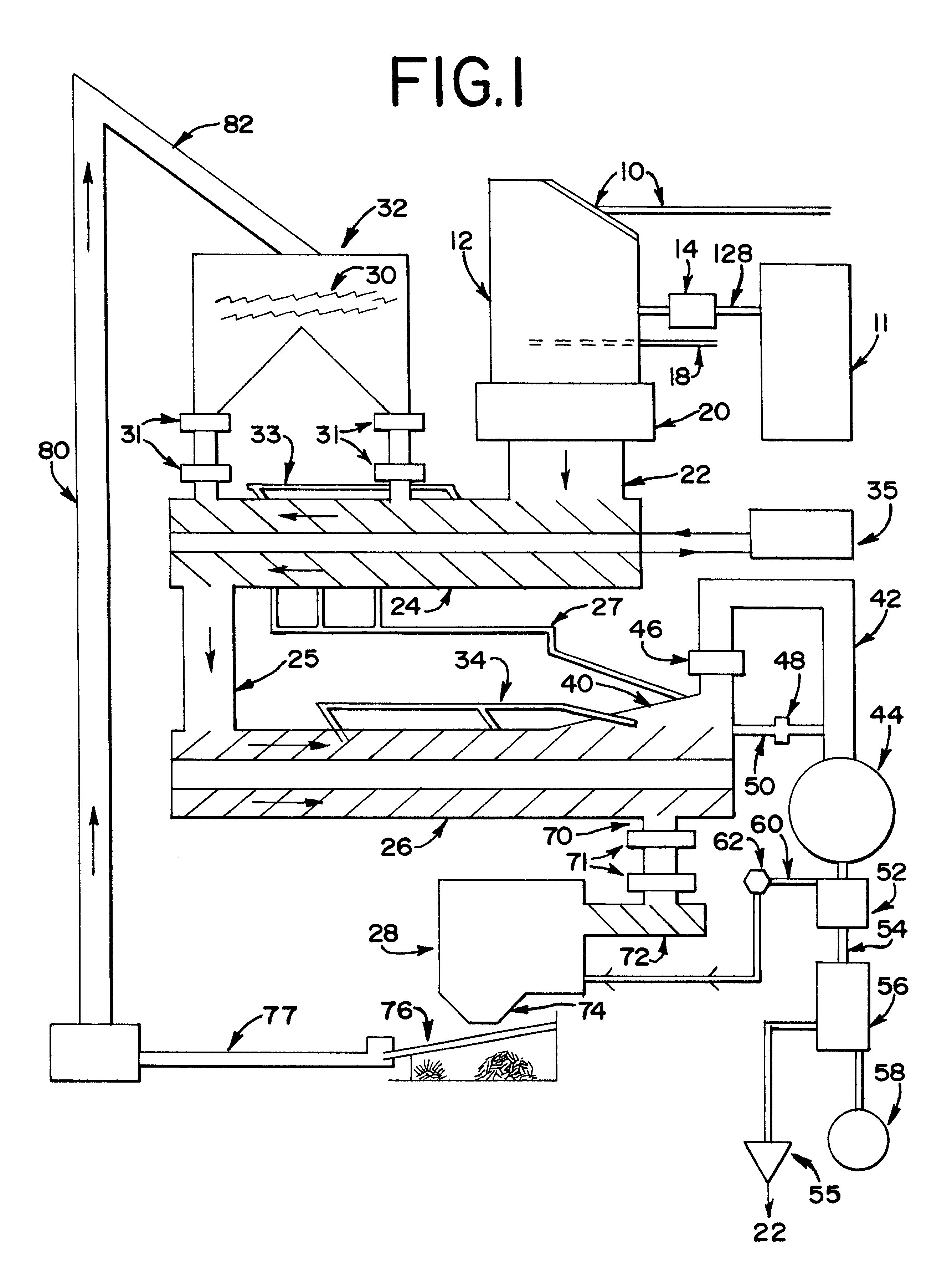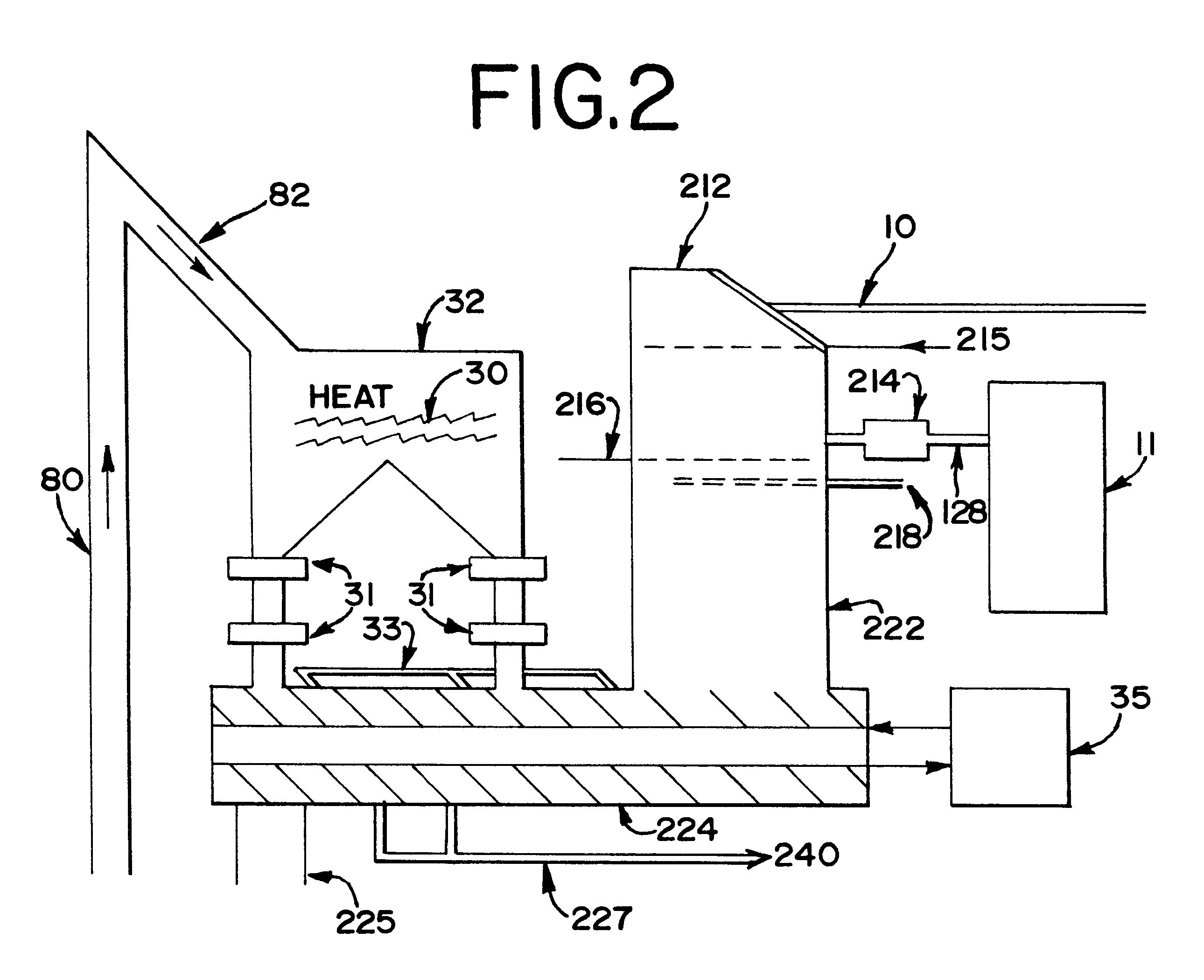Processing method and system to convert garbage to oil
a processing method and system technology, applied in the field of processing methods and systems to convert garbage to oil, can solve the problems of long sought but rarely if ever obtained, process economic difficulties, and no successful application of converting native organic waste to oil
- Summary
- Abstract
- Description
- Claims
- Application Information
AI Technical Summary
Benefits of technology
Problems solved by technology
Method used
Image
Examples
Embodiment Construction
A processor constructed in accordance with this invention may be used to process a variety of organic and mixed materials. The following is a typical embodiment for organic waste.
As shown in FIG. 1, process material is loaded from a conveyor belt 10 into a hopper 12. The hopper 12 has a closing lid or similar arrangement for limiting free admission of air, particularly if air contamination may be a concern. A blower 14 establishes a negative air pressure within the hopper and propels the gases from the hopper 12 through a line 128 into a tank 11 filled with chlorinated water. When air contamination is anticipated, steam or hot oil at 250 degrees F. is directed through a line 18 against and into the process material and calcium oxide (CaO) and / or calcium carbonate (CaCO.sub.3) is added as it is fed from hopper 12 into a shredder 20. The process material is reduced in size in the shredder 20 to less than about 3 / 4-inch dimensions. Such a shedder is not necessary in all applications, s...
PUM
| Property | Measurement | Unit |
|---|---|---|
| temperature | aaaaa | aaaaa |
| temperature | aaaaa | aaaaa |
| temperature | aaaaa | aaaaa |
Abstract
Description
Claims
Application Information
 Login to View More
Login to View More - R&D
- Intellectual Property
- Life Sciences
- Materials
- Tech Scout
- Unparalleled Data Quality
- Higher Quality Content
- 60% Fewer Hallucinations
Browse by: Latest US Patents, China's latest patents, Technical Efficacy Thesaurus, Application Domain, Technology Topic, Popular Technical Reports.
© 2025 PatSnap. All rights reserved.Legal|Privacy policy|Modern Slavery Act Transparency Statement|Sitemap|About US| Contact US: help@patsnap.com



